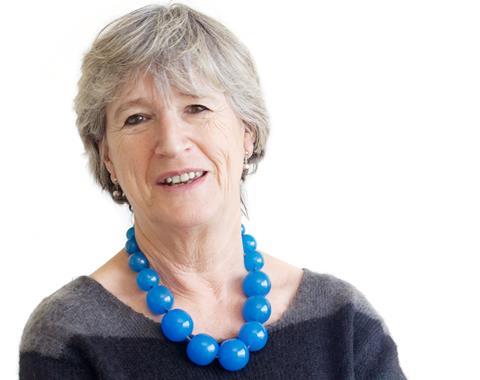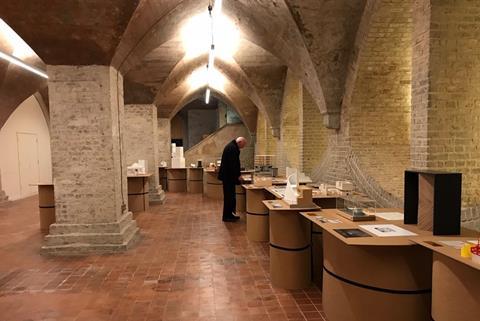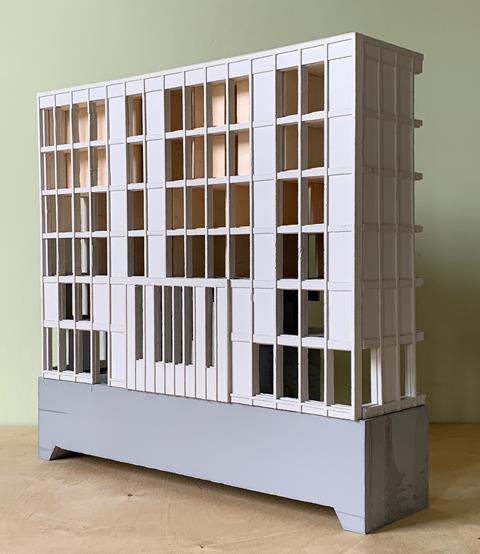Gillian Darley finds herself more uplifted than she expected by an exhibition of religious architecture

Although I wasn’t convent educated, my school days were steeped in endless religious observance, albeit of a decidedly lacklustre Church of England nature. I realise how fortunate were the Jewish and Muslim girls, granted leave of absence from the tedious daily round and allowed their own observance, or not. I would have been very happy to go for a pantheistic walk, but it was not an option.
In fact we were hardly ever in a space specifically designed for worship, far less anywhere spiritually or aesthetically uplifting. Now, decades on, those in charge of churches and chapels have learnt to be entrepreneurial as well as spiritual, willing to sing for their suppers (and roofs and spires and mod cons) and many faith buildings, whatever their designation, are often happy to open the doors to anyone seeking introspection, uplift or simply delight.
Congregation, the Architecture Foundation exhibition briefly showing in the undercroft at St Mary Magdalene, Paddington, offers a summary of 23 recent examples, both renovation and new-build.
In the words of the curators (Ellis Woodman and Rosie Gibbs-Stevenson) the exhibits are “the products of social, economic and cultural pressures that are specific to the present moment”.

Among these is the crypt itself, recently transformed into attractive, usable space by Dow Jones Architects. Like this, Christian examples tend to be adaptive work that can facilitate secular functions as well as worship, whereas the new centres commissioned by Muslim and Hindu groups are expanding religious architecture in Britain, alongside established congregations such as Reform Judaism or those that have been displaced such as the Belarusian diaspora who are building for their futures.
The schemes presented include the extraordinary ongoing ambitions of the White Eagle Lodge (founded 1936), an immense and well-endowed spiritual campus in Hampshire. New Lands is designed by James Gorst Architects as a series of pavilions, their geometry and disposition designed to reflect mankind’s connections to the earth and heavens, a very considerable ambition which, ley lines apart, also inspired the great cathedrals from Durham to Chartres.

At the opposite extreme, with no fixed site and presumably a very modest budget, the Diocese of London has taken a huge imaginative leap in commissioning a floating community church from Denizen Works with boat builders Turks, initially to serve the emerging Olympic communities but which will be able to circumnavigate the canal system. The translucent walls are designed to be compressed as the craft passes under bridges, inspired alike by the bellows mechanism of an organ or the pop-up roof of an old VW Camper vans. Religion or even community action doesn’t come much more ingenious than this.
>> Also read: Technical Study: Floating church, London
>> Also read: Patrick Lynch’s Inspiration: St Peter’s Church, Klippan
The exhibition, designed and housed on a shoestring to great effect, gives an airing to the kind of initiative that comes easily to well-organised faith communities. Surprisingly enough, no modern Quaker meeting houses were represented (there are some distinguished examples) but remember that village churches, for all their usual advantages of site and architectural quality, were merely forerunners to local secular community buildings. Now, often enhanced by a cannily disguised kitchen unit and WC, they have returned to centre stage.
Faith buildings can signal to a wider, religiously disengaged public that they are concerned with the multiple problems of the moment, whether driven by the urgency of Grenfell Tower or locally displaced flood victims or merely dealing with the continual scourge of loneliness and destitution. What emerges from the exhibition is the power of design at the service of faith and, for that, let’s offer praise wherever it’s due.


Postscript
Congregation is on at St Mary’s Magdalene in Paddington until 5pm on Saturday.
















No comments yet